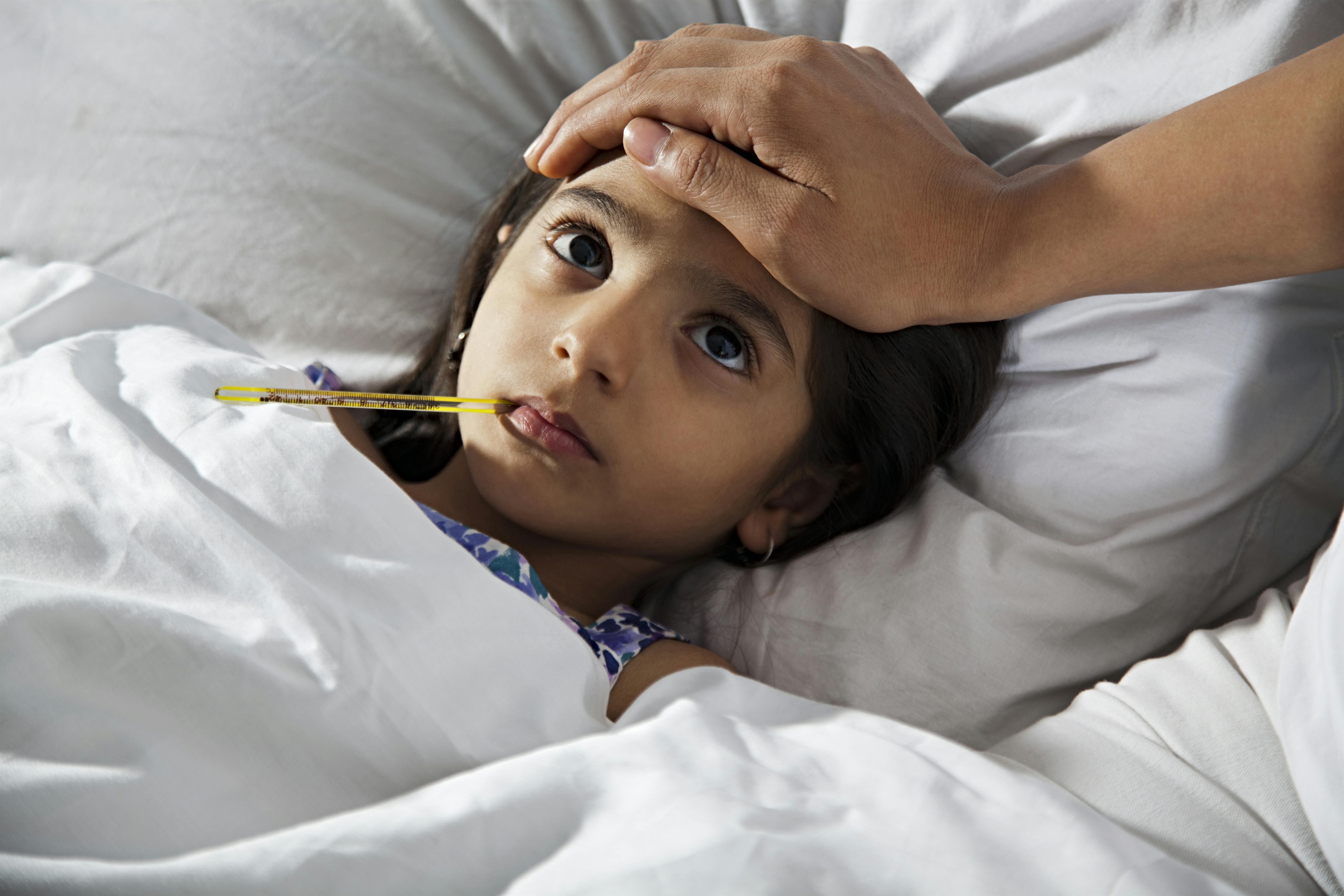Preventing Influenza in Infants and Young Children: What Can You Do as a Parent?

Fictional image, for illustrative purposes only.
Influenza, commonly known as the flu, is a common respiratory illness that can be particularly severe for infants and young children 1. Their still-developing immune systems make them more vulnerable to complications, which can lead to serious health issues like pneumonia, hospitalisations, or even death 1. In fact, each year, around 20,000 children under the age of 5 are hospitalised due to complications from the influenza disease 2.
As a parent, it’s essential to be aware of these risks and take proactive measures to protect your child's health. This blog will offer valuable information on influenza disease, including its risks and prevention measures, to help you keep your child safe and well.
Understanding Influenza Disease in Infants and Young Children
Influenza is a contagious respiratory illness caused by influenza viruses 1,3. It primarily affects the nose, throat, and lungs, and can be particularly challenging for infants and young children due to their immature immune systems 3.
Children under 5 years old, especially those under 2 years old and those with certain chronic health conditions, face a higher risk of severe flu complications 4. This includes 4:
Children under 6 months old are at risk because they cannot be vaccinated directly.
Children aged 6 months to 5 years are at a higher risk of flu-related hospitalisations.
Children aged 6 months to 18 years with chronic health conditions, including:
Asthma and chronic lung diseases
Heart disease (like congenital heart disease)
Neurologic and neurodevelopmental conditions (such as cerebral palsy and epilepsy)
Kidney and liver disorders
Metabolic disorders
Blood disorders (like sickle cell disease)
Endocrine disorders (such as diabetes)
Weakened immune systems (like due to HIV and cancer)
Those taking aspirin or salicylate-containing medicines
Extreme obesity (BMI at or above the 95th percentile)
Flu viruses are of four types: A, B, C, and D. Influenza A and B are the main causes of seasonal flu epidemics 1,3. These viruses spread rapidly through droplets released into the air when an infected person coughs or sneezes. Others can then inhale these viral droplets and become infected. The virus can also be transmitted via hands that have touched infected droplets or contaminated surfaces 1.
Young children are especially susceptible to influenza due to frequent interactions in crowded settings like schools and nursing homes 1.
Vaccination is a key preventive measure against influenza. The influenza vaccination is safe and helps strengthen the immune system to fight the virus effectively, reducing the risk of infection and its spread 5.
Symptoms of Influenza Disease

Fictional image, for illustrative purposes only.
Influenza symptoms typically begin about 2 days after exposure to the virus, but they can appear anywhere from 1 to 4 days later1. These symptoms can vary from mild to severe and usually appear suddenly6. Common influenza symptoms include6,1:
Sudden fever
Chills
Dry cough
Sore throat
Runny or congested nose
Headache
Muscle or body aches
Fatigue
Children may also experience vomiting and diarrhoea5. The cough associated with the flu can be severe and may last for 2 weeks or longer1. Most people recover from the flu within a few days to less than two weeks6.
In children, severe influenza-related symptoms that require medical attention may include6:
Rapid or difficult breathing
Bluish lips or face
Rib retractions with each breath
Chest pain
Severe muscle pain (e.g., refusal to walk)
Signs of dehydration (e.g., no urine for 8 hours, dry mouth, no tears when crying)
Lack of alertness or interaction when awake
Seizures
Fever over 104°F that doesn’t respond to medication
Any fever in infants under 12 weeks
Fever or cough that initially improves but then worsens
Worsening of chronic medical conditions
Children may also experience complications that can be life-threatening and potentially fatal, including 6:
Sinus infections
Ear infections
Pneumonia (lung infection caused by the flu virus alone or in combination with bacteria)
Myocarditis (inflammation of the heart)
Encephalitis (inflammation of the brain)
Myositis or rhabdomyolysis (inflammation of muscle tissues)
Multi-organ failure (e.g., respiratory or kidney failure)
Sepsis (bloodstream infections)
Worsening of chronic conditions (e.g., asthma or chronic heart disease)
Influenza vaccinations help lower the number of flu cases, hospital visits, and deaths each year 5.
Importance of Influenza Vaccination
Influenza vaccination is a key measure to protect your child from the flu 5. The vaccination is recommended annually for children aged 6 months and older and stimulates the immune system to recognise and combat the influenza virus, reducing the chances of severe illness5,7.
Vaccinating children is vital as it prevents flu-related illnesses, minimises doctor visits and hospitalisations, and lowers the risk of severe symptoms, ICU care, and flu-related deaths. It is particularly important for children with chronic health conditions, as it helps manage these conditions and reduce the risk of complications8.
As parents, you may want to consider the 7-Star Protection Programme, a comprehensive vaccination schedule created by the IAP Advisory Committee on Vaccination & Immunization Practices (ACVIP). This programme includes influenza vaccination and protection against other significant diseases such as Hepatitis A, Chickenpox, Mumps, Meningitis, and Rubella.
Consult your paediatrician to learn more about the 7-Star Protection schedule.
Practical Tips for Parents to Prevent Influenza
Along with vaccination, parents can take additional measures to help reduce the spread of influenza viruses1,5:
Keep your child away from anyone who is ill.
If your child is unwell, have them stay home and minimise contact with others for at least 24 hours.
Encourage your child to cover their coughs and sneezes with a tissue or their elbow, and ensure tissues are disposed of properly.
Use masks to help prevent the spread of the virus and protect against inhalation.
Make sure your child washes their hands frequently with soap and water; if that's not possible, use an alcohol-based hand sanitiser.
Teach your child to avoid touching their eyes, nose, and mouth to prevent the spread of germs.
Conclusion
Preventing influenza disease in infants and young children is vital due to their higher risk of severe complications1,6. By understanding these risks, ensuring annual vaccinations, and following practical prevention measures, you can help lower the chances of your child contracting the flu and experiencing its harmful effects5.
Influenza vaccination is a key strategy for flu prevention, helping to reduce the incidence of illnesses, hospitalisations, and deaths each year5.
Consult your paediatrician for advice and to ensure your child receives the essential vaccinations and care.
References
- Influenza (seasonal). (n.d.). Who.int. Retrieved September 11, 2024, from https://www.who.int/news-room/fact-sheets/detail/influenza-(seasonal)
- Flu and children - NFID. (2023). https://www.nfid.org/infectious-diseases/flu-and-children/
- (2024c, June 5). About flu. Centers for Disease Control and Prevention.https://www.cdc.gov/flu/about/index.html
- (2024, October 10). Flu and children. Influenza (Flu). https://www.cdc.gov/flu/highrisk/children.html?CDC_AAref_Val=https://www.cdc.gov/flu/highrisk/children-high-risk.htm
- (2025, January 14). Preventing seasonal flu. Influenza (Flu). https://www.cdc.gov/flu/prevention/?CDC_AAref_Val=https://www.cdc.gov/flu/prevent/prevention.htm
- (2025b, January 14). Signs and symptoms of flu. Influenza (Flu). https://www.cdc.gov/flu/signs-symptoms/?CDC_AAref_Val=https://www.cdc.gov/flu/symptoms/symptoms.htm
- (2023, August 7). Explaining how vaccines work. Centers for Disease Control and Prevention.https://www.cdc.gov/vaccines/hcp/conversations/understanding-vacc-work.html
- (2025a, January 14). Benefits of the flu vaccine. Flu Vaccines Work. https://www.cdc.gov/flu-vaccines-work/benefits/index.html
CL Code: NP-IN-PVU-WCNT-240017 DoP Jan 2025
Read More
-
Chickenpox Prevention in Children: Symptoms and Protection through Varicella Vaccination
12-03-2025 Read more »
Read more »

